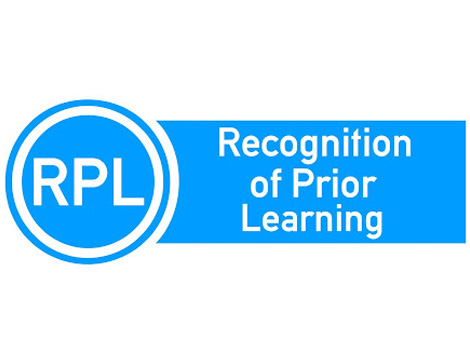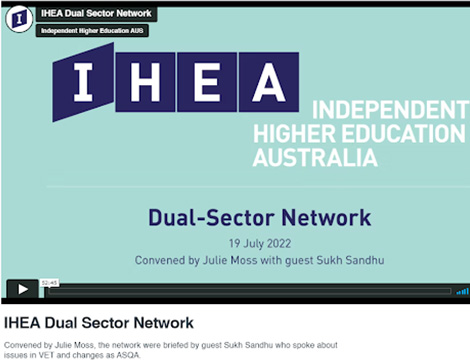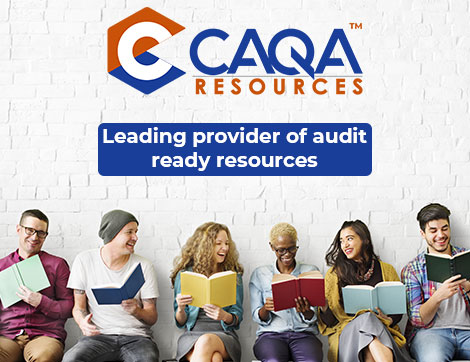Assessment evidence in the VET sector refers to the process and methods used by assessors to gather, generate and judge the quality of evidence for the purpose of making informed judgements about vocational competence.
It includes how assessors:
- Design and select assessment instruments
- Plan and conduct assessments
- Interpret and use assessment results as evidence of a student’s claim of competence
There are different types of assessment evidence that can be used in the VET sector, including:
Direct evidence: This is generated when an assessor observes a candidate undertaking a task or activity, or when the candidate provides a first-hand account of their own performance.
Indirect evidence: This is generated from sources other than the candidate themselves, such as witness testimony, video or audio recordings, or documents produced by the candidate.
Anecdotal evidence: This is information that is not directly related to the candidate’s performance, but which may nonetheless be useful in making a judgement about their vocational competence. This could include information from references, employer feedback, or third-party observations
Direct Evidence
Training and assessment in the VET sector relies heavily on direct evidence.
This is because learners in the VET sector are typically engaged in practical, hands-on activities that allow assessors to directly observe their skills and knowledge in action.
Direct evidence can take many forms, but it typically includes:
- Observations of learners carrying out tasks
- Interviews with learners about their experiences and learning
- Products or artefacts produced by learners as part of their learning (e.g., essays, drawings, models)
Assessment tasks specifically designed to test specific skills or knowledge areas.
Direct evidence is usually collected by assessors during the normal course of teaching and assessment activities.
However, it can also be collected through specialised assessment tasks or activities that are specifically designed to assess particular skills or knowledge areas.
One of the advantages of using direct evidence is that it provides a clear link between the evidence and the relevant skill or knowledge area. This can make it easier for assessors to make judgements about whether a learner has demonstrated the required level of proficiency.
Another advantage of direct evidence is that it can be very specific. This means that it can provide detailed information about what a learner knows and can do, which can be very useful for diagnosis and planning purposes.
However, there are some disadvantages of using direct evidence. One of these is that it can be time-consuming and expensive to collect, especially if specialised assessment tasks are required.
Another disadvantage is that direct evidence is often open to interpretation without proper benchmarking in assessor’s copy of the training and assessment resources. This means that there can be scope for assessors to make different judgements about the same piece of evidence, which can lead to inconsistency in assessment decisions.
Indirect Evidence
Indirect evidence is often used to supplement direct evidence in order to get a more holistic picture of the learner’s achievement.
Indirect evidence has its advantages and disadvantages.
Advantages of indirect evidence:
- Can be used to assess a wide range of skills and knowledge
- Can be less time-consuming and expensive to collect than direct evidence
- Can be used to assess learners who are not able to physically perform a task
Disadvantages of indirect evidence:
- May be less reliable than direct evidence
- May be prone to bias
- May not provide as much detail as direct evidence
Indirect evidence can be collected in a number of ways, including through
- questionnaires,
- tests, and
- interviews.
Each method has its own advantages and disadvantages.
Questionnaires:
Advantages:
- Can assess a wide range of skills and knowledge
- Can be administered to a large number of people at once
- Can be relatively quick and easy to administer
Disadvantages:
- May be subject to response bias
- May not provide as much detail as other methods such as interviews or observations
Interviews:
Advantages:
- Can assess a wide range of skills and knowledge
- Can provide more detail than other methods such as questionnaires or tests
Disadvantages:
- May be time-consuming and expensive to administer
- May be subject to bias
- May not be able to assess a large number of people at once
The type of evidence used will depend on the particular assessment context and the purpose of the assessment.
For example, direct evidence may be more appropriate where a candidate’s practical skills are being assessed, while indirect evidence may be more suitable for assessing theoretical knowledge.
Anecdotal evidence
Anecdotal evidence is also known as “Supplementary evidence”
As the VET sector continues to grow and evolve, so too does the need for high-quality training and assessment. A key part of ensuring that training and assessment are of a high standard is the use of evidence-based practices.
One type of evidence that can be used to inform training and assessment practices is anecdotal evidence. Anecdotal evidence consists of stories or accounts of events that have been experienced by an individual or group. This type of evidence can be useful in providing insights into the effectiveness of different approaches to training and assessment.
However, it is important to note that anecdotal evidence should not be used as the sole basis for decision-making. Rather, it should be used in conjunction with other forms of evidence, such as research evidence, in order to make informed decisions about training and assessment practices.
It is important that assessors use a range of evidence sources to build up a comprehensive picture of the candidate’s competence.
This will help to ensure that the assessment is fair and accurate and that any judgement made about the candidate’s vocational competence is well-informed.












